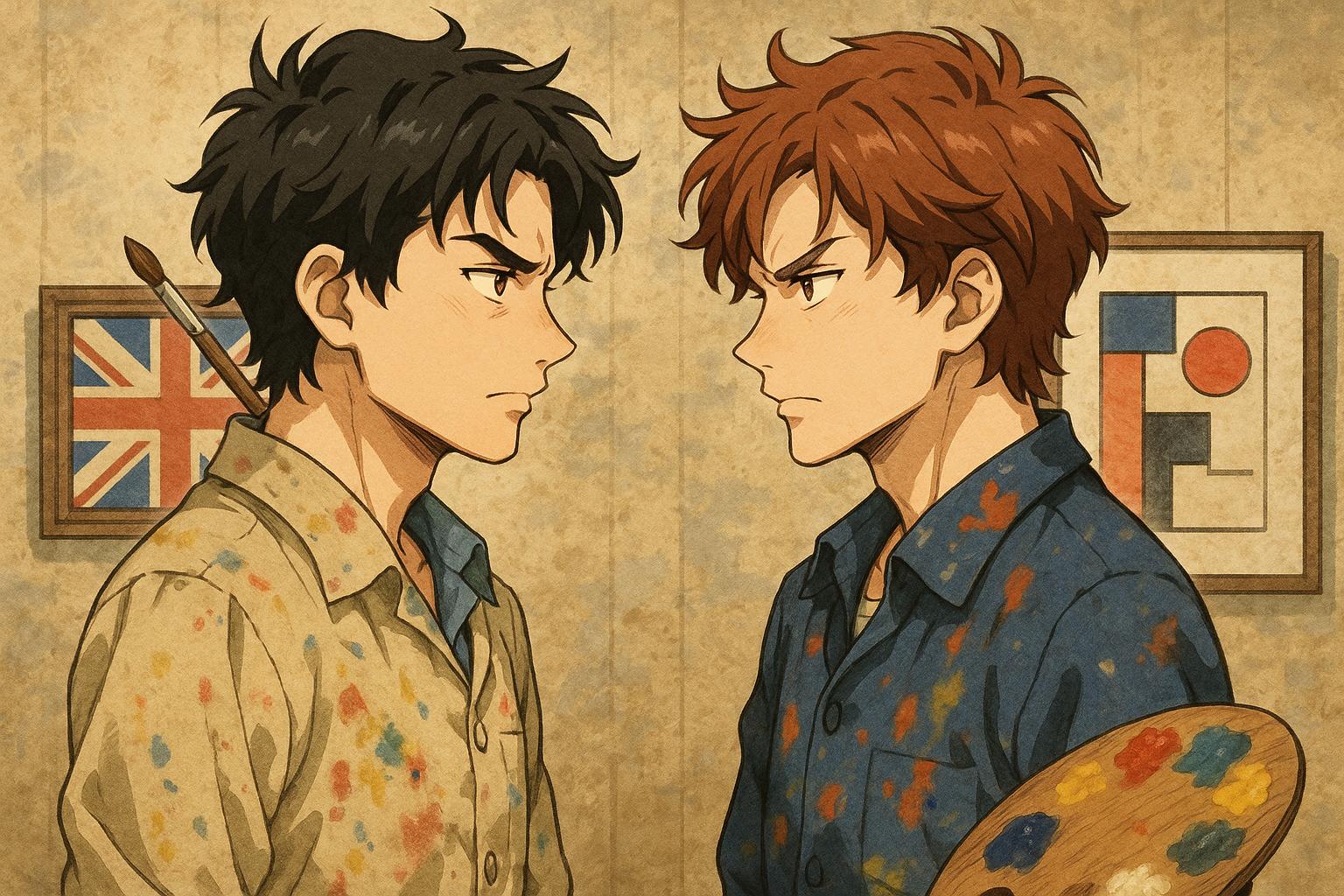Standing before Frank Auerbach’s evocative charcoal portrait of Leon Kossoff, juxtaposed with Kossoff’s own textured depiction of Auerbach, one cannot help but feel ensnared by the complex interplay of their gazes. This moment, caught between the creative duels and friendships of two influential artists, encapsulates the essence of Pallant House Gallery’s exhibition "Seeing Each Other: Portraits of Artists." Running from May 17 to November 2, 2025, this comprehensive showcase delves into the ways British artists have portrayed one another over the last 125 years.
The exhibition offers a powerful exploration of intimacy and influence, featuring a wide range of relationships from lovers to rivals. Among the intriguing pairings are Matthew Smith and Vera Cunningham, whose portraits are painted with a shared visual language that enriches their emotional narrative, contrasting sharply with works exploring more complex dynamics, like the antagonism between husband and wife John Bratby and Jean Cooke. This examination of diverse relationships reveals the nuanced tapestry of artistic community, highlighting how the act of seeing—and being seen—by another artist shapes one's creative output.
As one progresses through the exhibition, the chronological arrangement from the early 20th century to contemporary works reveals a story of British modern art that is deeply communal. Each pair of portraits not only invites aesthetic appreciation but also fosters a dialogue about identity and mutual influence. A particular highlight is the series of portraits of Walter Sickert, painted by influential women in his life: Sylvia Gosse, Nina Hamnett, and Thérèse Lessore. Each artist’s interpretation of Sickert underscores the complexities of representation; their differing portrayals prompt questions about the essence of the man behind the canvas, suggesting that only through multiple lenses can a fuller picture begin to emerge.
The exhibition also extends its narrative by traversing various artistic movements, encapsulating the bohemian spirit of early 20th-century London, the fervour of pre-war modernism, and the vibrancy of pop art. It acts as a bygone cocktail party, with guests swapping visual anecdotes within a rich tapestry of artistic collaboration. This environment echoes the communal ethos that characterises British modern art: a collective endeavour that intertwines professional identity with personal relationships.
Yet, it is not solely a narrative of camaraderie. The exhibition thoughtfully incorporates themes of rivalry and artistic discord. Sickert's portrayal of the discontent between Roald Kristian and Nina Hamnett speaks volumes about the emotional undercurrents that can exist within artistic partnerships. Likewise, Cedric Morris’s unflattering representation of Barbara Hepworth suggests a more antagonistic rapport. Such examples remind viewers that artistic relationships can traverse a spectrum from love to animosity, enriching the story of each artist’s work.
As part of Pallant House's trilogic approach to modern British art—having previously showcased still life and landscape—this exhibition asserts itself as the fulcrum of a wider conversation. Although it occasionally flirts with celebrity culture, it ultimately succeeds in cementing a cohesive narrative about the intersections of artistic exchange. The curators have created a space that resonates with connection and shared experience, urging visitors to reflect on the history of art through the lens of personal relations.
The contemporary section of the exhibition is the most expansive, featuring works that explore the ongoing dialogue between artists of different eras. Noteworthy among them is Gillian Wearing’s provocative photograph of herself as Georgia O’Keeffe and Caroline Coon's reimagined portrait of Pauline Boty. Such works expand the conventional boundaries of artistic relationships, including imagined connections that transcend time.
Crucially, the exhibition culminates with Lubaina Himid’s painted wooden figures of female artists from both past and present, such as Frida Kahlo and Bridget Riley. These life-sized depictions underscore the exhibition's core thesis: that artists engage with each other on profound levels, with their relationships giving birth to rich and varied artistic expressions.
Overall, "Seeing Each Other: Portraits of Artists" not only celebrates the intricacies of representation but also invites a broader consideration of the relational dynamics inherent within the art world. It is an invitation to witness how intimacy, rivalry, and friendship shape the narratives of both creators and their creations, asserting firmly that art is born out of relationships that are as intricate as the works themselves.
Reference Map: 1. Paragraph 1: [1] 2. Paragraph 2: [1] 3. Paragraph 3: [1] 4. Paragraph 4: [1], [2] 5. Paragraph 5: [1], [4] 6. Paragraph 6: [1], [2] 7. Paragraph 7: [1], [2] 8. Paragraph 8: [1], [2], [3]
Source: Noah Wire Services
